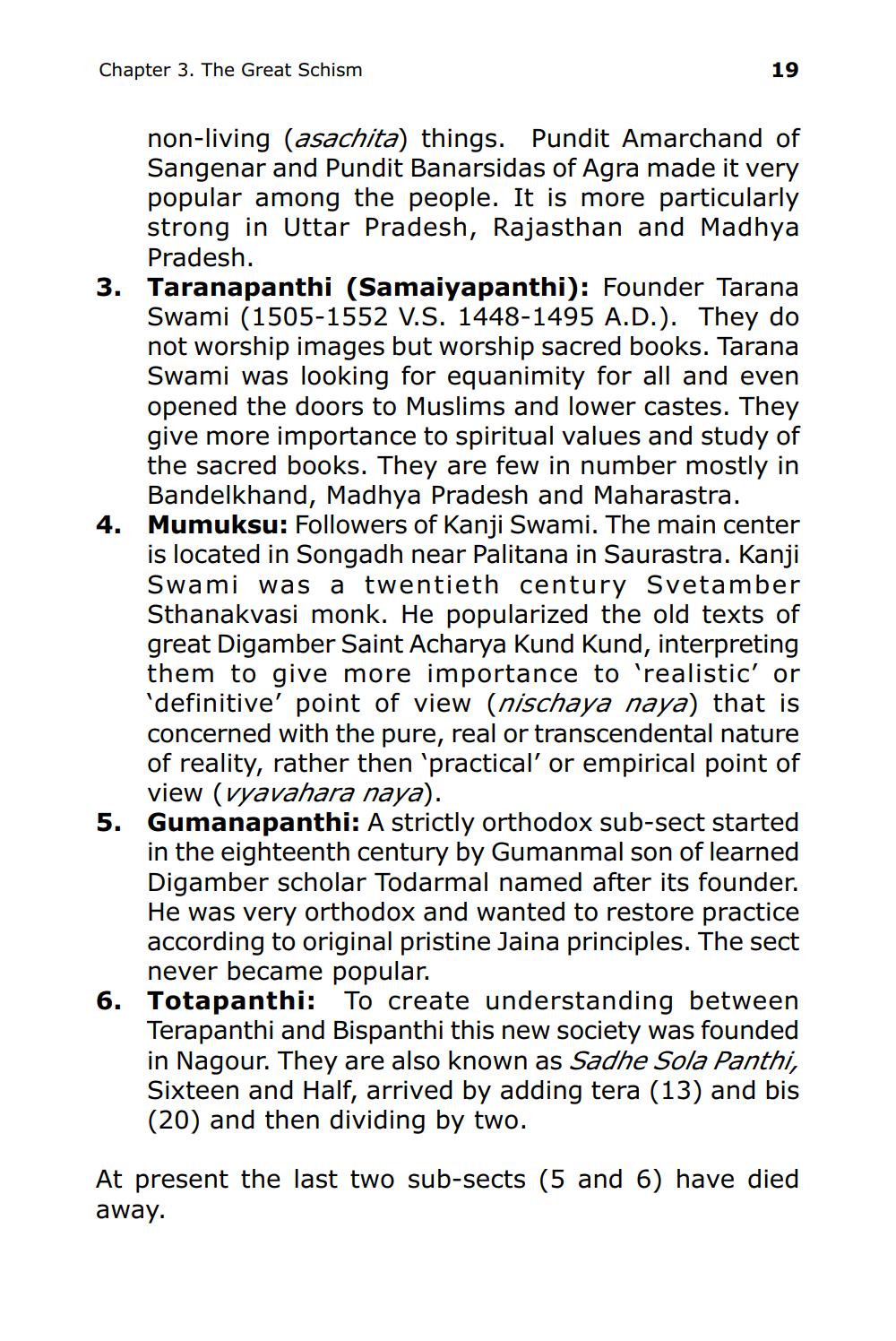________________
Chapter 3. The Great Schism
19
non-living (asachita) things. Pundit Amarchand of Sangenar and Pundit Banarsidas of Agra made it very popular among the people. It is more particularly strong in Uttar Pradesh, Rajasthan and Madhya Pradesh. Taranapanthi (Samaiyapanthi): Founder Tarana Swami (1505-1552 V.S. 1448-1495 A.D.). They do not worship images but worship sacred books. Tarana Swami was looking for equanimity for all and even opened the doors to Muslims and lower castes. They give more importance to spiritual values and study of the sacred books. They are few in number mostly in Bandelkhand, Madhya Pradesh and Maharastra. Mumuksu: Followers of Kanji Swami. The main center is located in Songadh near Palitana in Saurastra. Kanji Swami was a twentieth century Svetamber Sthanakvasi monk. He popularized the old texts of great Digamber Saint Acharya Kund Kund, interpreting them to give more importance to 'realistic' or definitive' point of view (nischaya naya) that is concerned with the pure, real or transcendental nature of reality, rather then 'practical or empirical point of view (vyavahara naya). Gumanapanthi: A strictly orthodox sub-sect started in the eighteenth century by Gumanmal son of learned Digamber scholar Todarmal named after its founder. He was very orthodox and wanted to restore practice according to original pristine Jaina principles. The sect
never became popular. 6. Totapanthi: To create understanding between
Terapanthi and Bispanthi this new society was founded in Nagour. They are also known as Sadhe Sola Panthi, Sixteen and Half, arrived by adding tera (13) and bis (20) and then dividing by two.
At present the last two sub-sects (5 and 6) have died away.




